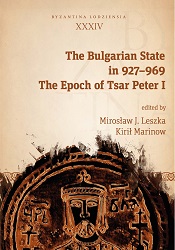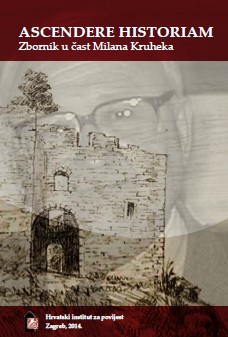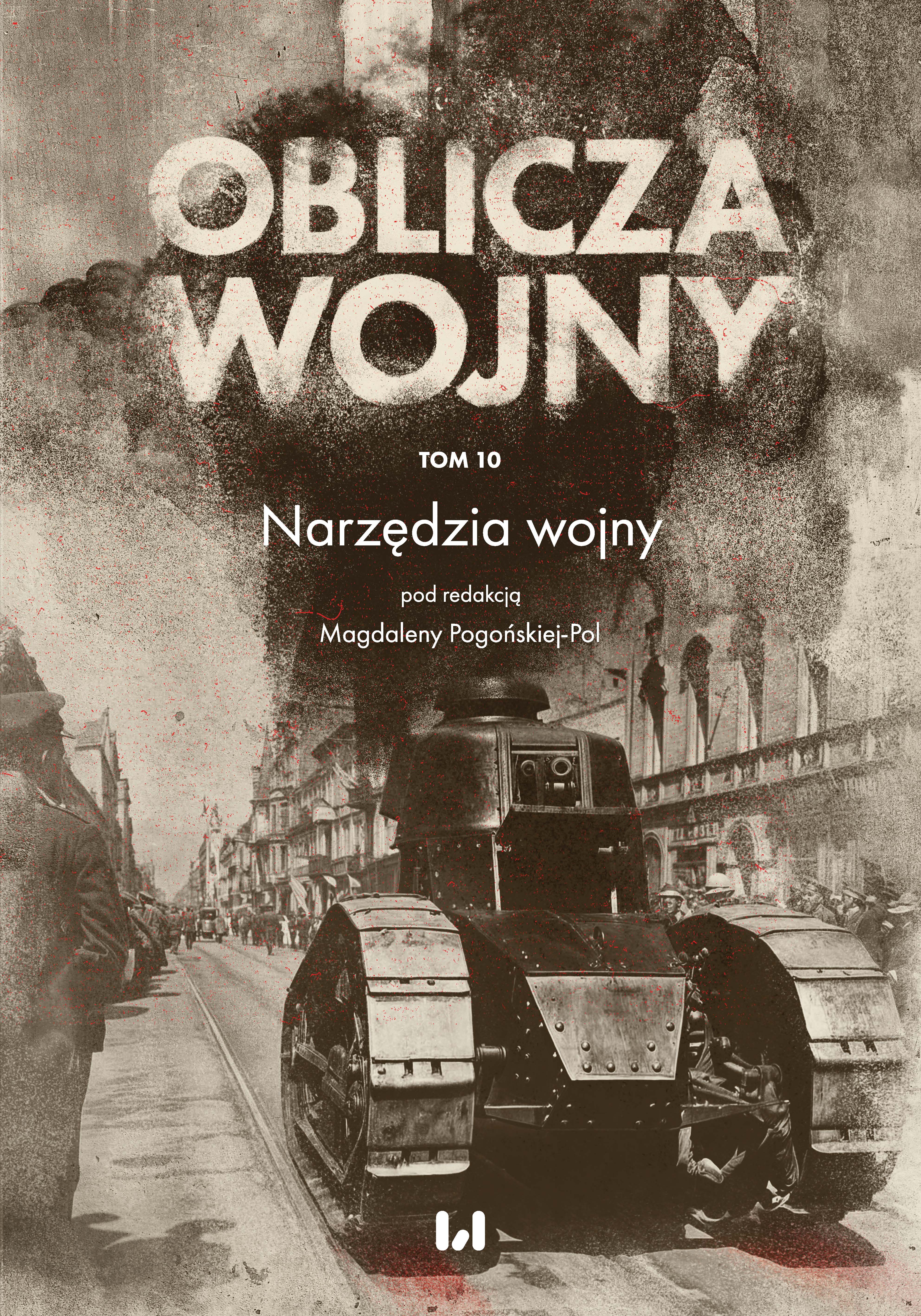
We kindly inform you that, as long as the subject affiliation of our 300.000+ articles is in progress, you might get unsufficient or no results on your third level or second level search. In this case, please broaden your search criteria.








On the basis of the works of the Romanian historian Adrian Magina as well as on the basis of published and unpublished archival sources, the author presents in this article an overview of activities of Peter Tarnok of Machkas, a lesser nobleman of Romanian origin who performed the duty of the Captain of Senj from 1486 until 1492. Because the activities of aforementioned Captain of Senj as well as his family background and origin are not sufficiently researched in the Croatian historiography, author first brings the family-tree of the Machkas family, an overview of their estates and description of activities of family members. In the main part of the article author gives an overview of the activities of Peter Tarnok of Machkas when he performed the duty of the captain of Senj and the overview of the fortresses which he had governed in the time of King Matthias Corvinus, his illegitimate son John Corvinus and King Vladislas II the Jagellonian. In the whole time period of Peter’s performing the duty of the captain of Senj it is obvious that he, according to the duty, received various estates and certain incomes attached to this duty, with which he had to finance his officials and soldiers on the territory of the Captaincy. In the same way it is visible that Peter as captain of Senj, besides certain incomes in the city of Senj, had little influence in the city administration because the citizen were protected by the rules written in the Statute of Senj which was confirmed time and again by every ruler. According to that, Peter Tarnok had higher administrative authority in the territory of the Captaincy especially in solving administrative matters for the inhabitants of various districts. In addition, author describes the estates that Peter Tarnok received as an award for his loyal service to various aforementioned rulers, as well as his rapid advancement in career showing that Peter is an great example of the achieving higher social level by performing the duties for the rulers which is especially the trend in the time of King Matthias Corvinus.
More...
The article analyses selected reports from the second half of the 16th century on the state of the Ottoman military forces facing the Croatian Military Border. Reports were usually written by Habsburg military commanders on the basis of spy reports and various intelligences. Reports analyzed in this article are rather precise and detailed. They were commissioned by the Court War Council in order to provide data on how to reform and restructure Habsburg military potentials on the Croatian Border. An insight into the Ottoman forces clearly suggests that Habsburg forces were fl awed and insufficient in many aspects such as the number of paid infantry and cavalry, the number of unpaid military and the number and condition of functional fortresses. Habsburg reforms that followed attempted to bring more balance into military affairs in the region. In addition to raw figures, reports brought data on the dispersion and usage of Ottoman forces as well as rather comprehensive lists of Ottoman military commanders by name and/or surname. Sometimes they even provided information on their family relations or their background which makes them highly usable in research of Ottoman military and social elites that resided opposite the Croatian Border. In order to facilitate the usage and comparison of data, spy reports are translated from German into Croatian and information are systematized in tables. Transcript of analyzed reports from Gothic into Latin script is attached in the appendix.
More...
Canonical visitations and monastic chronicles are internal Church documents, written in Latin, which can also be considered as historiographical sources because they testify on the history of the Roman Catholic Church as well as the population of a certain region. A variety of information can be collected from those writings, such as economy, society, weather conditions etc., and they can be also used as sources for military history. The canonical visitations here considered are the visitations, both of property and of persons, made by the bishops of the diocese of Senj in the 18th century, whereas the chronicles are, for the purpose of this work, the chronicles of the Franciscan monasteries in Slavonia. Here it can be found testimonies about financial and judicial division between the Church and the state, their mutual cooperation, and sometimes even traces of conflict. These documents also give information about military expeditions, activities (such as building of fortifications or battles) and army movements through various parts of Croatia, about the names of regiments and officers (and even of some soldiers). We can also learn something about the nationality, religion and even the life of a soldier, through their interaction with the local people, and especially with the Church community. This work will show how these data can be classified and used for various purposes. It will also mention some problems the researchers encounter while translating, mostly because the specialized terminology has not yet been systematized.
More...
The methodical reconnaissance of the Đakovo Area covered 44 archaeological sites on which were evidenced remains of medieval fortifications or at least indication of the formal existence of medieval fortifications on those sites. On some analyzed sites which were of toponomastic interest (Gradina, Gradec, Zidina, Tabor etc), no visible traces of the fortifications were found. Nevertheless, even on these sites some surface archaeological traces from the period of prehistory, antics and early middle ages were found. The major remains of medieval architecture were conserved only at the location of the Late Gothic bishop’s castle in Đakovo (today in the complex of bishop’s residence), while the earth substrate with circular or oval remains (bulwarks and dikes) are recorded on several sites (Paučje, Ratkov Dol, Viškovci, Levanjska Varoš, etc). On some historically important sites on which, based on the photos and drawings, there were still existing remains of medieval noble strongholds (Gorjani, Krndij a) in the beginning of the 20th century, today there are almost no visible archaeological remains. Finally, the specific group of medieval church-strongholds is recorded (Dragotin, lost churches in Podgorje and Gorjani, etc).
More...
It is very likely that there is no other country in Europe with so many historical ruins as there are in Croatia. Constant raids on Croatian territory of the foreign forces and long lasting belonging of Croatian lands to the foreign states which governments did not take care for its historical heritage, has left many ruins as well as the remains of the old cities, strongholds and other objects from the Antiquity to the present day in very bed condition. Although there is no integral atlas of the medieval and early modern ruins, nevertheless, the various defensive constructions used in anti-Ottoman wars had invoked up significant attention in the recent years. Therefore, in limitation of financial possibilities these objects are researched as well as restored in the recent years as a very important part of the Croatian heritage. Today it is possible to distinguish several types of these anti-Ottoman strongholds. First group are strongholds which has never been conquered by Ottomans, while the second group are strongholds destroyed during the anti-Ottoman wars. Final group are those strongholds constructed by the Viennese court or by the Estates of Carniola and Styria with the aim of stopping the Ottoman advance further to the West. These strongholds finally managed to stop Ottoman advance making thus these parts of Croatian lands the final reach of the Ottoman conquest in the Europe. Finally, the cordon of these strongholds was created and it vividly depicts the efforts of the nobility and the local inhabitants in stopping the Ottoman advance. The remains of these strongholds are in the main focus of this paper which is dedicated to the great researcher of these strongholds – Milan Kruhek.
More...
Based on a record that is kept in the War Archive (Kriegsarchiv) in Vienna, the author presents the information on organization, settlements and population of the Karlovac Generality, the part of the Croatian and Slavonian Military Border which was integral part of the Habsburg Monarchy. According to that record the Karlovac Generality had two communities (Senj and Karlobag), four regiments (Lička, Otočka, Ogulinska and Slunjska), 48 companies (12 in each regiment), 609 settlements (the most in Slunjska regiment) and population of 182148. Based on the document named Verzeichnis sämmtlicher Regimenter und Bataillons sowie Komunitäten mit Seelenstand dated in 1802, in which can be found many information on the structure of regiments, as well on the surnames of the offi cers, names of the settlements in the particular companies, and the names of male and female inhabitants, the author repeats so far known information but also give new information on the Karlovac Generality, especially on its territorial organization in the beginning of the 19th century.
More...
The Cancellieri vendetta, a conflict between members of the Cancellieri clan, took place in the 13th century, perhaps in the year 1300. In terms of narrative sources, we can identify two distinct groups of records: the Florentine tradition and the Pistoia chronicle. The vendetta determined the history of both Pistoia and the Tuscan region, as the antagonisms among the Pistoiain elite caused similar factional strife in Florence as well when the leaders of the two Cancellieri factions moved to the nearby city. The so-called ‘White’ Cancellieri were linked with the Florentine White Guelphs; the other party were linked with the Florentine Black Guelphs. The leaders of the Florentine factions – the Donati (Blacks) and the Cerchi (Whites) – were opponents in everyday politics. The impulse of the Cancellieri clan members had a huge effect on the situation leading to violent factional wars in Florence that ended in 1308. In my study, I analyse the narrative sources of this period, both from Pistoia and from Florence, and examine the tools used in the fights: the ‘tangible’ weapons that were mentioned by the anonymous writer from Pistoia and the ‘narrative’ tools of the Florentine tradition.
More...
The militia portalis system was introduced in Hungary in 1397. According to royal decree, each landowner was required to equip one mounted archer for every 20 peasant plots (porta) on his estate. Members of the lesser nobility were required to join their financial resources and do the same for every 20 peasant plots. This system was employed against the Ottomans and other opponents of the realm, though it was most effective against Turkish light cavalry, as their way of warfare was similar to that of Hungarian light cavalry. Warriors serving in the banderia of ecclesiastical and secular lords cannot be regarded as mercenaries in the proper sense of the word (though sometimes they received money for their services) – in most cases they served their lords for subsistence, provisions, land donations, and support for rise in social status. From a military point of view, the soldiers of ecclesiastical banderia were the most effective, and the ones serving in the units of secular lords and the counties were less useful on the battlefield. During the rule of King Matthias (1458–1490) the first mercenary army in Hungarian history was organised, but the militia portalis system was also upheld. In the Jagiellonian period (1490–1526) the system was reinvigorated and served successfully against smaller-scale Ottoman forces, but it was incapable of withstanding the all-out attacks in 1521 and 1526.
More...
In the autumn of 1429, Florence declared war on Lucca, to complete its domination over the north of Tuscany. The siege began in December and continued until the mercenary chief Niccolò Piccinino defeated the Florentine army outside the walls of Lucca, but the war continued until May 1433. In this period, although firearms already existed, the use of crossbows was still very important. To satisfy the requests of Florence, the men of Montefioralle, a small town in Chianti, specialised in the production of crossbow bolt heads. In this village of about two hundred inhabitants, every man was a blacksmith and together they produced on average 100,000 metal elements every six months. The shafts for the crossbow bolts were, on the other hand, produced by other specialised craftsmen in the mountains of the Casentino, and were assembled in other places. The Florentine war office, the Dieci di Balìa, took care of the logistics both to connect the different artisans and to send the ammunition to the battlefields and fortresses. Thanks to the documents kept in the State Archives of Florence, it has been possible to reconstruct the entire network of artisans, the management of shipments, and the quantity and expense for these ammunitions.
More...
In this paper, I’ll present the first phase of the Italian Wars, specifically the period between 1494 and 1498. The study focuses on the French troops’ capitulation at Atella, which was a very important event as the war tide started to turn against the French following their victorious campaign through the Italian peninsula. The main source for the study was Mario Sanuto’s work called I diarii (‘Diaries’) – a detailed record of the aforementioned events that allow us to analyse the situation and gain clarity about the military, political, and economic aspects of the French army’s capitulation.
More...
This article considers the offensive and defensive armament, organisational structure, and condition of horses in the King of Poland’s 200-horse mercenary company under the command of rittmeister (rotmistrz) Jan Buczacki in 1501. As a part of the permanent defence system (obrona potoczna), this company was stationed in the territory of the Kingdom of Poland’s Ruthenian Lands in order to protect the lives and property of the local residents from the military threats of Tatar and Moldavian forces. The article presents the results of a source study and a statistical analysis of a part of a hand-written military registry from 1501, which is stored in the Central Archives of Historical Records in Warsaw. In the registry records, 24 knights (men-at-arms, or companions – towarzysze), including the captain, were mentioned by their name or nickname, while the majority of the soldiers and squires remained anonymous. In total, the company comprised 171 men (including 24 knights and 2 military musicians) and 29 squires. The records report that the company had 135 pieces of offensive armament (102 crossbows, 30 lances, 3 matchlocks) and 174 pieces of defensive armament (28 full plate knights’ armours, 106 shooters’ armours, 5 chain mails, a breastplate, a sallet helmet, an armet helmet, and a small shield – a buckler). According to the type of armaments, the soldiers of the unit can be divided into four categories: heavy lancers (kopijnicy), arbalists, demi-lancers (półkopijnik), and swordsmen. In addition, the registry includes detailed records describing the company’s horses, which were classified as either spearman or shooters’ horses. In particular, there were 56 heavy lancers’ horses, 137 shooters’ horses, and 7 horses belonging to neither of those categories
More...
The present article deals with an undated Persian manuscript titled Javāher al-Sanāye’ جواهرالصنايع [Jewels of Crafts]. Many Persian manuscripts provide invaluable information on weapon-making, forging swords, archery techniques, attacking fortifications, casting cannons and making firearms, and military strategies. Most accounts on making crucible steel are part of books on jewels and stones. In my last book Jewels and Patterned Crucible Steel: Books of Jewels, Stones, and Metals, I provided a translation and annotation of the book Goharnāmeh [Book of Jewels] written by Mohammad ben Mansur for the ruler Uzun Hasan Āq Qoyonlu in the 15th century CE (9th century Hijra). The Goharnāmeh by Ben Mansur describes precious and semi-precious stones, animal products, and metals. An essential part of the book deals with blades and making crucible steel. However, the manuscript Javāher al-Sanāye’ [Jewels of Crafts], which is the topic of this article, is about the transformation of stones and metals. The book describes how the craftsmen made crucible steel and expands on how ironworkers used crucibles for conducting other alchemical processes to change and transform the colour of stones, among other processes. Javāher al-Sanāye’ [Jewels of Crafts] is a gem for war-related topics as it provides invaluable information on how to make crucible steel blades, how to identify and classify swords, how to make the adhesive glue for attaching the blade tang to the handle of the sword, how to make glue for fletching arrows, how to make naphtha (burning material) for attacking fortifications, and how to make the black powder.
More...
В последней трети XIX в. развитие велоспорта привлекло внимание передовых армий, которые вскоре осознали преимущества в скорости передвижения пехоты и возможности оставить велосипеды без присмотра, в отличии от, например кавалерии, часть рядового состава которой выделялась для ухода за лошадьми. Уход за велосипедом оказался значительно проще и дешевле, чем за дорогими животными. Чехословацкая армия использовала велосипедные отряды с момента своего создания, У каждого пограничного батальона была своя рота велосипедистов. В начале 1930-х гг. появилось несколько исследований велосипедных отрядов, а вскоре после этого были созданы велосипедные батальоны, присоединенные к кавалерийским бригадам и быстрым дивизиям. В 1938 г. велосипедные батальоны приняли участие в подавлении восстания генлейновских террористов, велосипедисты также действовали на территории Подкарпатской Руси, где подавляли деятельность польских и венгерских диверсионных групп. Как только стало понятно, что велосипеды можно использовать в военных целях, возник вопрос о том, как должны выглядеть велосипеды, подходящие для этих целей. В статье пойдет речь о чехословацких военных велосипедах, их недостаточном качестве и небрежном подходе военной администрации к решению этого вопроса. Исследование основано на архивных материалах, хранящихся в фондах Центрального военного архива – Военного исторического архива (Vojenský ústřední archiv – Vojenský historický archiv) и архивах некоторых производителей велосипедов, а также на литературе изучаемого периода и опубликованном опыте военнослужащих велосипедных подразделений.
More...